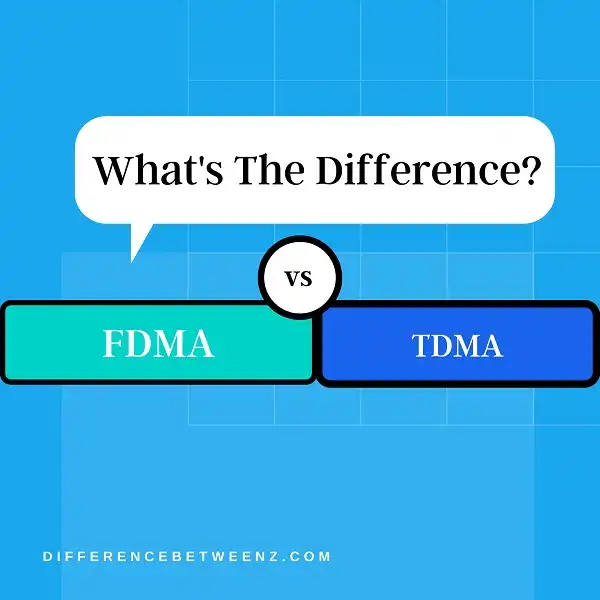Cellular technology has come a long way in the past few decades. The first mobile phones were large, heavy, and had very short battery life. Today, we have smartphones that are smaller than most watches and can last for days on a single charge. How did we get from there to here? In this blog post, we’ll be discussing the difference between FDMA and TDMA.
What is FDMA?
FDMA is an acronym for Frequency-Division Multiple Access. It is a channel access method used in some multiple-access systems, most notably in FDMA cellular networks. In an FDMA system, each user is assigned to a carrier frequency, and only that user can transmit on that frequency. As a result, each user has exclusive use of their assigned frequency, and there is no need for time-division or code-division methods to access the channel. This makes FDMA particularly well suited for applications where low latency is important, such as in voice communications. Additionally, FDMA systems are relatively simple to design and implement, which makes them attractive for use in many different types of systems.
What is TDMA?
In telecommunications, time-division multiple access (TDMA) is a channel access method for shared-medium networks. It allows several users to share the same radio frequency (RF) channel by dividing it into different time slots. This allows each user to transmit in rapid succession rather than continuously, providing multiple users with access to the medium and avoiding the problems of interfering signals that are found in systems that use frequency-division multiple access (FDMA) or code-division multiple access (CDMA). User terminals with a TDMA capability are typically designed to use a single RF carrier in either full-duplex mode or half-duplex mode. In full-duplex mode, both uplink and downlink transmissions can be active at the same time in different time slots. In half-duplex mode, only one direction can be active at any one time; however, uplink and downlink transmissions can take place on alternate time slots so that communication can still take place while the other direction is inactive. TDMA is used in both cellular telephone systems and satellite communications systems.
Difference between FDMA and TDMA
In telecommunications, frequency-division multiple access (FDMA) and time-division multiple access (TDMA) is used in channel access methods. They are commonly applied in radio communication systems, especially multiple-access systems, where several transmitters share the same communication channel. In an FDMA system, each transmitter is assigned a unique subcarrier frequency, while in a TDMA system each transmitter is assigned a timeslot. Both FDMA and TDMA divide the available spectrum or bandwidth into discrete units which are then allocated to individual users. While FDMA allocates frequencies to users, TDMA allocates time slots to users. If a user requires more bandwidth, more subcarrier frequencies can be assigned using FDMA. On the other hand, if a user requires more time on the channel, additional time slots can be allotted using TDMA. When applied to digital systems such as GSM, both FDMA and TDMA are referred to as digital multiplexing techniques.
Conclusion
FDMA and TDMA are two of the most common modulation techniques used in cellular networks. While they have some similarities, there are also key differences between the two that can impact your network performance. We’ve outlined those differences for you here, so you can make an informed decision about which one is right for your needs.


